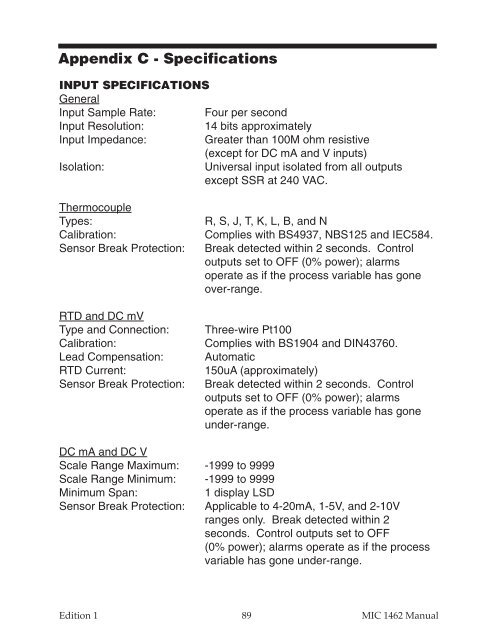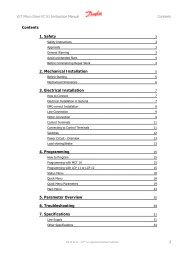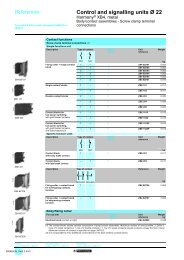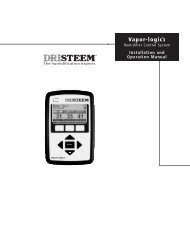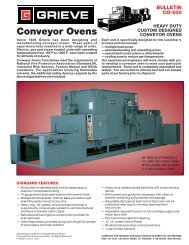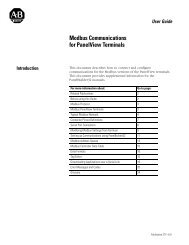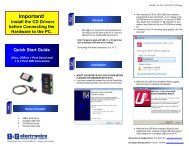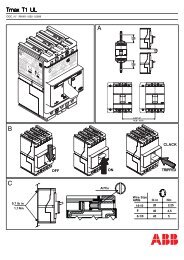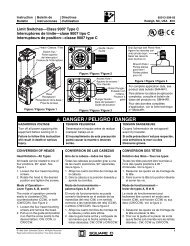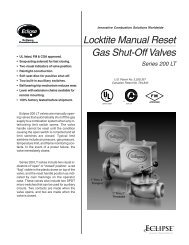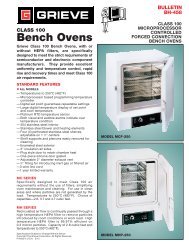MIC1462 manual.pdf
MIC1462 manual.pdf
MIC1462 manual.pdf
You also want an ePaper? Increase the reach of your titles
YUMPU automatically turns print PDFs into web optimized ePapers that Google loves.
Appendix C - Specifications<br />
INPUT SPECIFICATIONS<br />
General<br />
Input Sample Rate: Four per second<br />
Input Resolution:<br />
14 bits approximately<br />
Input Impedance:<br />
Greater than 100M ohm resistive<br />
(except for DC mA and V inputs)<br />
Isolation:<br />
Universal input isolated from all outputs<br />
except SSR at 240 VAC.<br />
Thermocouple<br />
Types:<br />
Calibration:<br />
Sensor Break Protection:<br />
RTD and DC mV<br />
Type and Connection:<br />
Calibration:<br />
Lead Compensation:<br />
RTD Current:<br />
Sensor Break Protection:<br />
R, S, J, T, K, L, B, and N<br />
Complies with BS4937, NBS125 and IEC584.<br />
Break detected within 2 seconds. Control<br />
outputs set to OFF (0% power); alarms<br />
operate as if the process variable has gone<br />
over-range.<br />
Three-wire Pt100<br />
Complies with BS1904 and DIN43760.<br />
Automatic<br />
150uA (approximately)<br />
Break detected within 2 seconds. Control<br />
outputs set to OFF (0% power); alarms<br />
operate as if the process variable has gone<br />
under-range.<br />
DC mA and DC V<br />
Scale Range Maximum: -1999 to 9999<br />
Scale Range Minimum: -1999 to 9999<br />
Minimum Span:<br />
1 display LSD<br />
Sensor Break Protection: Applicable to 4-20mA, 1-5V, and 2-10V<br />
ranges only. Break detected within 2<br />
seconds. Control outputs set to OFF<br />
(0% power); alarms operate as if the process<br />
variable has gone under-range.<br />
Edition 1<br />
89 MIC 1462 Manual


